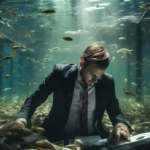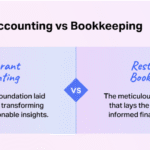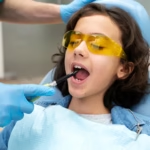You have a BA in Jewellery Design but shifted into web development shortly thereafter. What led you to making the choice to shift gears and complete a web development immersive?
When I chose jewellery design as a subject to study, I was 16 and did not know a lot about what the world has to offer. But this degree was my opportunity to go and study in Central Saint Martins, a uni that is known for encouraging its students to experiment and take their ideas as far as possible from the initial source of inspiration. The research and projects I made there and also the new machines and technologies I was introduced to during the studies, as well as living in London itself and the opportunities it gave me to discover the most ground breaking contemporary art, led me to realize that I am more interested in digital technologies, both as a medium and as a concept. It also ties well with my interest in combining art and science and I felt that technological literacy could be a bridge for me to connect these different worlds.
After graduation, I was incredibly lost because the degree did not narrow my interests at all, but instead expanded them hugely, so I was desperately trying everything. Code sounded kind of magical and high tech, so I took some evening courses but mostly learned coding on my own through online tutorials on lynda.com. I immediately felt so engaged into this new way of thinking and ‘talking’ to computers. It also gave a huge satisfaction to the logical part of my brains and it gave me the sense of creative power just like you feel when making art, music or anything creative.
The web immersive was not my first attempt to code. Before joining the bootcamp I already had a year of programming experience. The reason I decided to devote 10 weeks of my life to the bootcamp was a highly practical decision.
I should say that my feelings about the bootcamp are really mixed. The good thing is that it gave me an understanding of the industry, so it was easier to get into it and this was the most important thing for me due to the reason I explained before. In terms of skills I got there, I definitely improved my understanding of the logic of programming and of difference between well and badly written code, even if they both make the programme work. But looking back at it I can say that these days the technologies I mainly use are the ones that I learnt on my own, not during the bootcamp. Also the last weeks were not very well structured, but I think it was the flaw of that particular bootcamp, because I heard of so many positive experiences from people who joined web immersives in other places.
And unfortunately, my art practice has suffered during the weeks of bootcamp, so I was really hungry after 10 weeks to finally come back to my art practice. Coding from 9 to 6 and then coming back home to tackle more coding challenges until night did not leave much free time. But it was a trade off I expected, even if it was a difficult one.For some reason the descriptors “artist” and “engineer” strike most as mutually exclusive pursuits; as if the characteristics of one do not match up with the other, when in fact both are makers. Do you find that you often get a lot of surprised looks when you describe yourself as both a web developer and an artist?That’s exactly the reaction I am getting most of the time! In this case, I already have a prepared small talk to explain shortly what my practice includes and I always have pictures to show to make it easier for people to get what I am doing. Cross-disciplinarity is in the nature of our times and soon we’ll be hearing about the most bizzarre combinations of professions and disciplines, so the synthesis of art and engineering will sound like a trivial one. It will just take some time, but I believe that is something we are steadily getting to.As you mentioned, both artists and engineers are makers and I find coding to be a very creative practice. In programming you are provided with the initial blocks that you can combine in various ways to build whatever you have ambitions and imagination for. It is just a matter of how you approach your practice – it is possible to be a totally uncreative artist as well, this is just a stereotype about artists being more creative and imaginative and the lack of knowledge of what engineers are dealing with.
Do you find that the way you approach making your artwork seeps into your approach to web development or vice versa?
I can spend long hours trying to tackle the smallest challenge and completing the tiniest detail in my art works and this perseverance and persistence is the approach I carried with me to the process of programming. With my art works I tend to overcomplicate things and to go in the most ambitious directions and sometimes this distractive pattern emerges in the way I approach coding. A programme can never be perfect or complete, so it is difficult to know when to stop.
But programming is a process with more clearly defined outcome and borders, so it brings me back to earth, which is very beneficial to me as an artist. So I’d say that my approach to coding makes my art practice more grounded and makes me think more realistically. It forces me to spend more time on actual making and experimenting, rather than sit with my head in the clouds thinking of which direction I could have taken.
What patterns do you find in coding that you also find in your artistic process?
These both disciplines are creative processes, so I’d say they share pretty much the same patterns. For me the process always begins with some sort of research to decide approximately what I am trying to make/express and which medium/technology will work best for accomplishing my goal. This is the most difficult and sometimes painful part of the process because it involves so much hard decision making. As a multimedia artist it is always difficult to find the right medium/material for a specific idea and the same applies to web development. It is crazy how many frameworks and various technologies you have to navigate through to make the right choices for yourself and not to get too overwhelmed. And then comes the most rewarding and joyful part of actual making, building, combining things together and reflecting upon them. And the final stages are always the most annoying in both art and programming – you are nearly done, but there are so many minor things to finish and polish and you have to decide when is the best time to stop.
What technologies do you most like to use to create your work? What are the processes that can get the most hairy in development?
To create visuals with code I am using Processing, a Java-based software, which is a real blessing for artists and visual people. It offers so many possibilities to create graphics: you can produce both very easy and complex outcomes with it. When I see what artist do with this fairly straightforward thing, I really feel the possibilities are limitless. Adobe Suite is also my best friend: I use Photoshop mainly for collaging, Illustrator for its precise beautiful vector lines, Adobe After Effects for moving images. Rhino 3D has been my main tool since the years in university, because of my ongoing interest in digital fabrication. I use it to create precise mathematical shapes on the computer screen and then bring them to reality by means of lasercutting and 3D-milling. Laser-cutting technology has been a huge source of inspiration for me because I can turn something computer-generated into a real object. Everytime I think I have exhausted its capacity, I come up with new projects where I could use it in a new way, so I am really curious how much longer this affair will last.
I find that the most difficult part in programming is an overwhelming number of choices you have to make. To start you need to find the most suitable technologies for your project and then there are still so many routes to take. There is no one proper way of writing code or solving a specific problem, so this is exactly the same issue artists are dealing with when finding the ‘right’ way to express what they want. Another challenge is the fact that computers are stupid, as my favourite artist Laurie Anderson states. If you miss a semi-colon, a comma or make a minor typo the machine won’t understand what you are telling it and the whole programme will just fail immediately.
What is the bar for entry like for non-coders to give some of these a whirl?
I really think that there is no bar at all and it is the main idea I want to communicate to people. There are so many stereotypes about coding, to name a few of them: it is too difficult, it is all about math, you can write a programme only if you have a degree in computer science, it is nerdy and boring. Every time I manage to break any of these stereotypes, I feel really rewarded. I even gave short introductions into programming to some friends of mine and they were astonished of how easy it is and how little it takes to write a piece of code that works. Of course, it takes time to polish your skills and become a really good programmer, but it can take you only one or two hours with a knowledgeable person or an online tutorial to understand the building blocks and logic of programming and then it is just a matter of trying and experimenting with it to start building more and more complex things.
From my own experience I can say that coding has one of the easiest learning curves than any other skill I’ve learnt in my life. Coding can really make you powerful and stereotypes should not stop a person from gaining such an amazing skill.
Is there anything out there that you’re particularly excited to try out?
There are way too many things I want to try out. To name a few: Openframeworks, which is a C++ toolkit for creative coding. Now my main tool for generative artworks is Processing, but I would like to try a new tool, just to know their differences, limitations and advantages.
A plugin for Rhino 3D software called Grasshopper seems like a really cool tool with great potential. It is basically a visual plugin that helps not to construct the shapes out of basic building blocks but to algorithmically model them with formulas and variables. Being an avid fan of Rhino 3D and programming, it is obvious that I am overly excited to combine them together. I even took a 3-day course on this plugin in New York, but unfortunately now it is not my main priority. Still I hope one day I’ll be able to go to some sort of residency to devote my full time and attention to exploring the possibilities of this technology in art.
Video projection and 3D-mapping is something I am willing to explore very soon, because this is the way for me to exhibit my digital screen-based works within physical spaces.
Physical computing is also on my list, but I need to take time before starting to learn it, because I don’t want to have a skill just for the purpose of having a skill. I want to do more research and reason why I really need to be able to make physical things interactive.
How do you integrate mathematics into your work? For example, the gifs and digital collages from your series Conversation with Ernst Haeckel?
I am fascinated by the idea that every process in the world is controlled by math and algorithms. When I look at Haeckel’s work I can see that his work stems from the same root of fascination. I get inspired by nature and by intricate shapes and patterns in his illustrations and I write code, using mathematical formulas to create patterns and movements that would look organic and alive. So I am basically replicating nature with algorithms on the screen of my computer. There is no crazy complex math – I am not too good at it – just some simple formulas, but the idea that I am following the same path that Mother Nature does is really mesmerizing for me. Then I combine my generated visuals with some illustrations by Haeckel that I animate. So, by juxtaposing and contrasting them, I am trying to have a ‘dialogue’ with Haeckel about this subject that has been so inspiring to people throughout the centuries.
I talk about math in other works of mine where I use precise digital tools, and I think that all the calculations that go behind the scenes when I am using powerful softwares and tools are very important to mention, because their precision is something that gives my work its mathematical quality but at the same time organic aesthetics. I would not be able to achieve it in any other way, so that’s what I mean when I mentioned the involvement of math in my works.
Sometimes it can be a little awkward to exhibit digital works in a physical gallery space. How have you exhibited some of your gifs or web animations in the past? (Do you have documentation of something like this? If not we can nix this question if it’s not relevant)
It is still a problem that I am trying to figure out. My physical works get more attention from galleries and curators which is pretty obvious: they know how to display and sell it. I’ve exhibited some of my screen-based works as simple projections on the wall, but I really don’t like this approach. So, currently I am looking into the possibilities of 3D projection to create installations on which I can project my screen-based works and to which viewers can relate more physically than to a two dimensional projected image. I am also fine with some of my artworks being unexhibited and and staying as something that you can experience only online. With so much time of our lives spent online, it is logical that digital artists try to inhabit the web and use it as an alternative gallery space for their works.
What are you currently working on? What challenges are you facing in the process and how do you intend on tackling them?
I have a collaborative project, that’s at an early stage of development, with an artist, a friend of mine. We want to create an online artwork, basically a website that will live only in the online realm. My web development practice mostly consists of commercial projects, because it is the main source of money for me. And with the internet being such an overly commercial space these days, you have to follow some rules to make a user with short attention span stay on the page for as long as possible. I’ve been researching early net-art and it is striking to think how the internet has changed since the early 90s. Back then, artists reflected on this new technology that seemed to break the borders and made physical distance seem insignificant. It is still the biggest advantage of the internet, but we use it mainly for selling and marketing and as artists we put our works out there – which is also basically a form of advertising – and I believe we don’t use online space as a creative tool and medium all that much. In that artwork, we are aiming to break away from all the rules followed on standard websites and make it into an unpredictable environment that an user will navigate and interact with in a non-linear way. Using web as the main medium is new for both of us, so now it seems like a very challenging project from all viewpoints and we are trying to understand how to start approaching it.
I am also working on a series of installations and reliefs that are made using Rhino and laser-cutting (pictured right). They have a very geometric look when I assemble the pieces but I paint them in bright colours and also paint imaginative plant creatures on top. This project brings me so much joy, because it is not as conceptual as some other works of mine, so I am just indulging in working with shapes and colours for the most part. The main challenge here is to find an affordable and working laser cutter because it is too expensive to pay for laser cutting jobs, especially to cut pieces as big as mine.









